Despite some improvement in the representation of women by cinema, TV shows, and brands, distortions in media remain that are risks to women receiving appropriate health care.
Breaking through taboos of weight, reproductive services, and mental health are the top 3 factors preventing women from getting proper care, according to Health On Her Terms, a research study from WPP and Ogilvy partnering with SeeHer, an organization of collaborations from media, technology, business, education, and other sectors (including over 7,000 brands) focused on the accurate portrayal of women and girls in society.
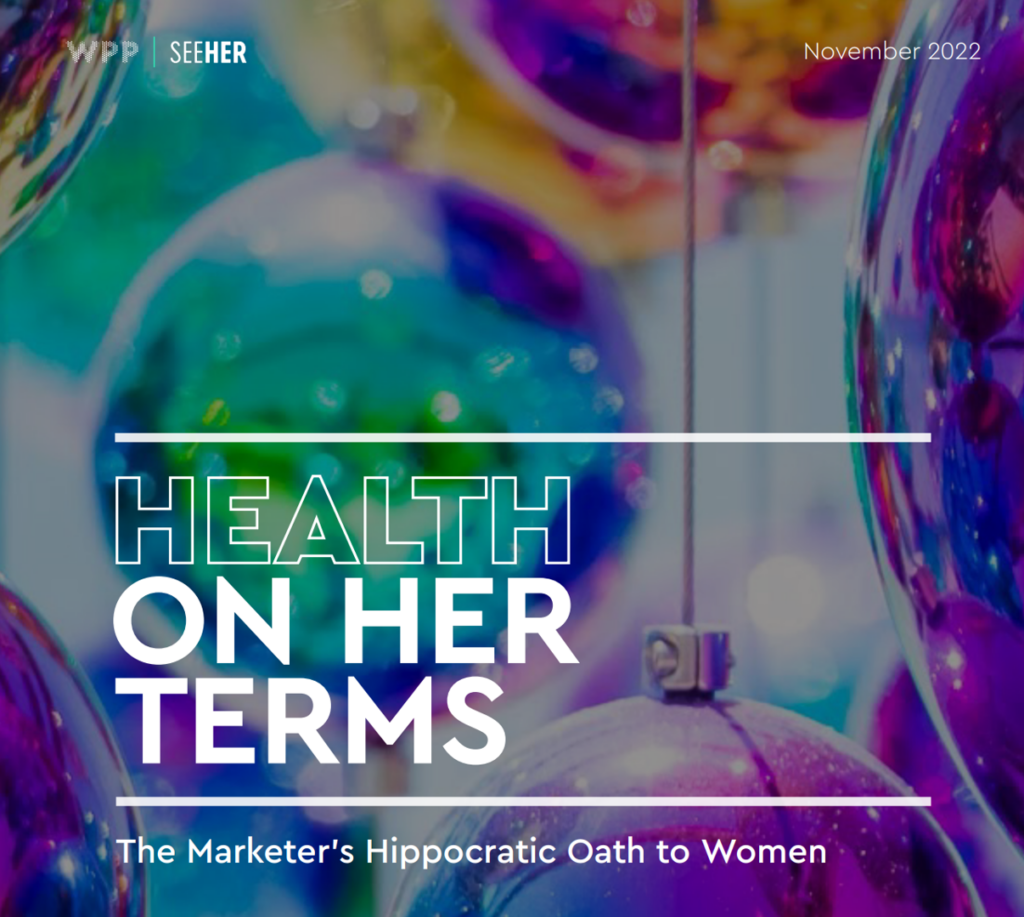
Taglined as “The Marketer’s Hippocratic Oath to Women, the report details market research assessing the views of 1,545 US women and non-binary people in 6 broad categories: by gender and sexual identity, racial/ethnic identity, age identity, socioeconomic identity, health identity, and parent identity. In approaching the respondents in this way, the research could unearth unique perspectives lost in the traditional demographic cohorts.
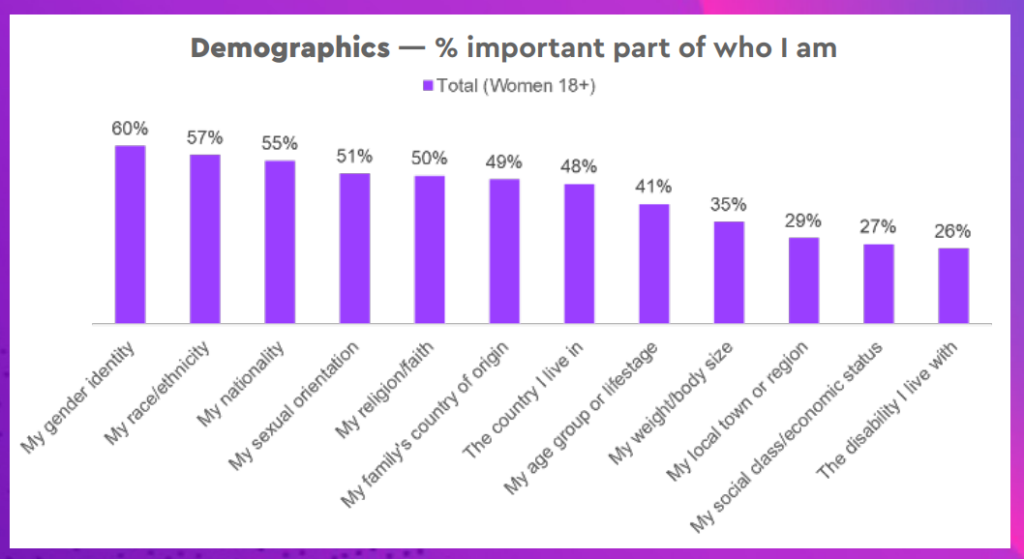
In fact, women in the study said that demographics were important parts of who they are, with “my” gender identity (for 60%), race/ethnicity (57%), nationality (55%), sexual orientation (51%), and religion/faith (50%) each important to at least one half of the study participants.
“Womanhood” was seen as deeply personal, where women ranked physical traits less important than their internal, individual senses of identity.
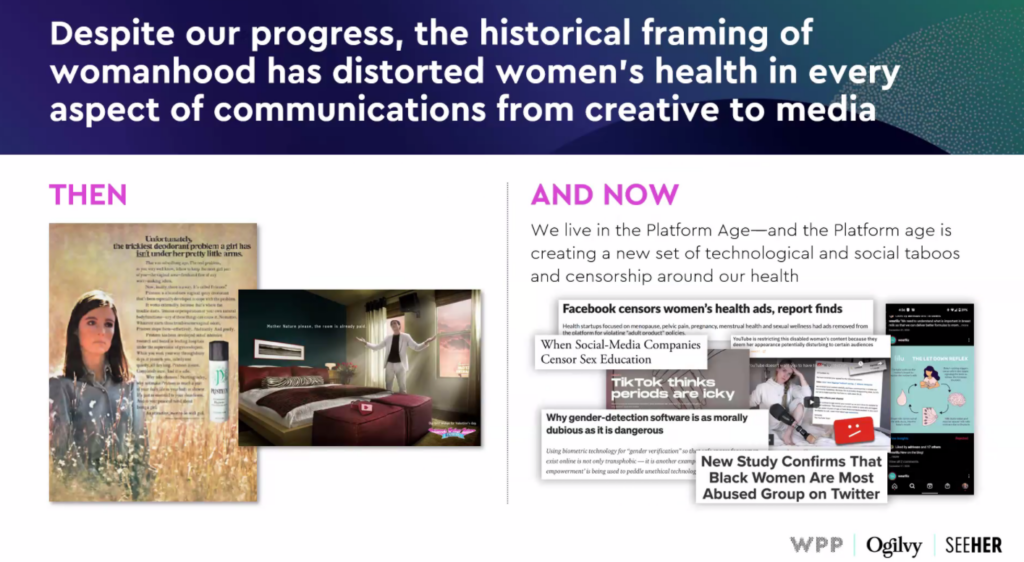
This finding is so profound for business to face and embrace because women are Chief Household Officers (including being the leading influence for health in the household). Thus, it’s incumbent on brands and companies to move from the “then” world to the “Now.”
Two examples of messaging illustrate the distorted lens on women’s health here:
- “Unfortunately, the trickiest deodorant problem a girl has isn’t under her pretty little arms,” a 1969 ad for Pristeen vaginal/feminine hygiene spray deodorant; and,
- “Mother Nature please, the room is already paid,” a 2011 ad for Tampax with the tagline, “Our best wishes for Valentine’s Day. Outsmart Mother Nature.”
“Now” is our Platform Age, enabled through technology and the people whose influences are amplified across media and social networks.
As the “Now” side of the graphic illustrates, social taboos still abound and in the age of social networks, can be amplified more quickly than the Pristeen ad could do in 1969.
Thus more than one-half of women called out those taboos for women’s healthcare as portrayed in media.
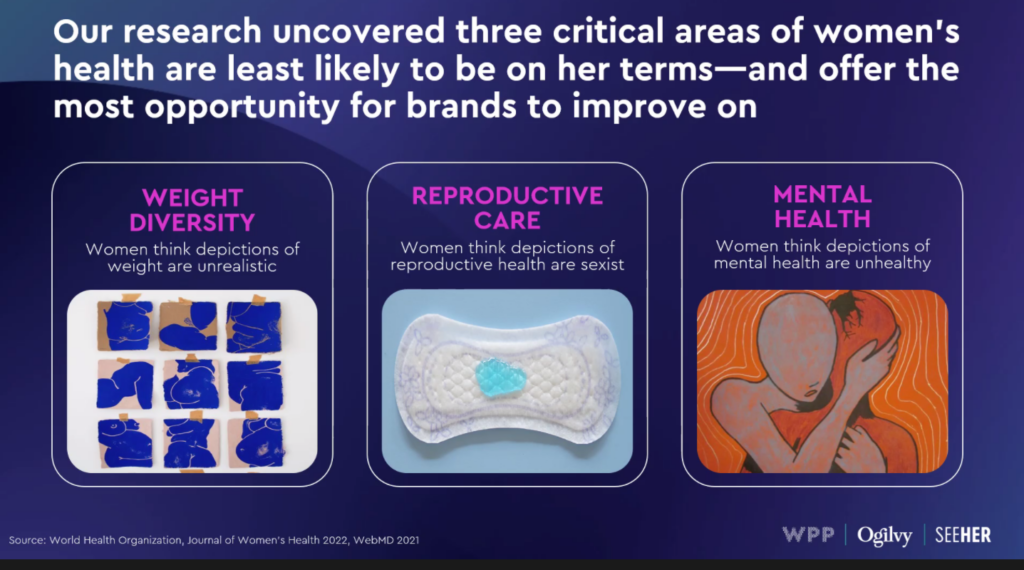
Women identified three areas above all for addressing Health on Her Terms: weight, where women have not seen diverse depictions of bodies; reproductive care, perceiving sexist portrayals of the topic; and, mental health, with media often portraying unhealthy scenarios.
“Gender equality needs to be embedded throughout the [creative, media, and business] ecosystem,” Christine Guilfoyle of SeeHer asserted in the research webcast.
She asked us to reflect: “What are your truths? Who are your consumers?” as well as assessing whether a portrayal or message was authentic, real, and accurate.
To bolster the economic argument, she reminded us that women in the world, The Female Economy as quantified by this Harvard Business Review piece, represent a $20 trillion economy: larger than that of China and India combined.
As an example of a campaign that gets women as we are in an authentic and real way, here’s a video from CVS Health called “Women’s Health Matters” which WPP, Ogilvy and SeeHer all agreed hit the mark.
Health Populi’s Hot Points: Another lens on what “She Knows” about health care is that historically, in America, women have borne disproportionately greater health care costs than men have. A January 2023 Gallup Poll found that women disproportionately were also avoiding health care due to cost, which I discussed here in Health Populi as another form of a “pink tax.”
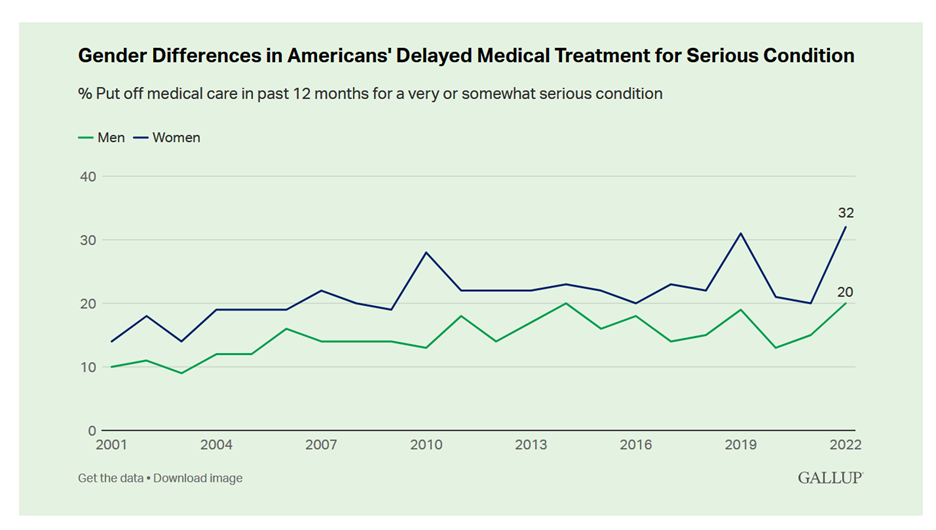
The financing and delivery of health care in America embeds the financial experience into a consumer’s healthcare experience. In a sense in 2023, all healthcare is retail in America — as patients continue to morph into health consumers with medical spending competing with or crowding out other household spending — especially borne by women, the Chief Health Officers of their households.
I leave you with a classic JAMA viewpoint article asserting that Value-based payments require valuing what matters to patients.
That’s the user-centered design requirement now embracing both value and values for women and health care, accounting for mind, body, spirit….and wallet.


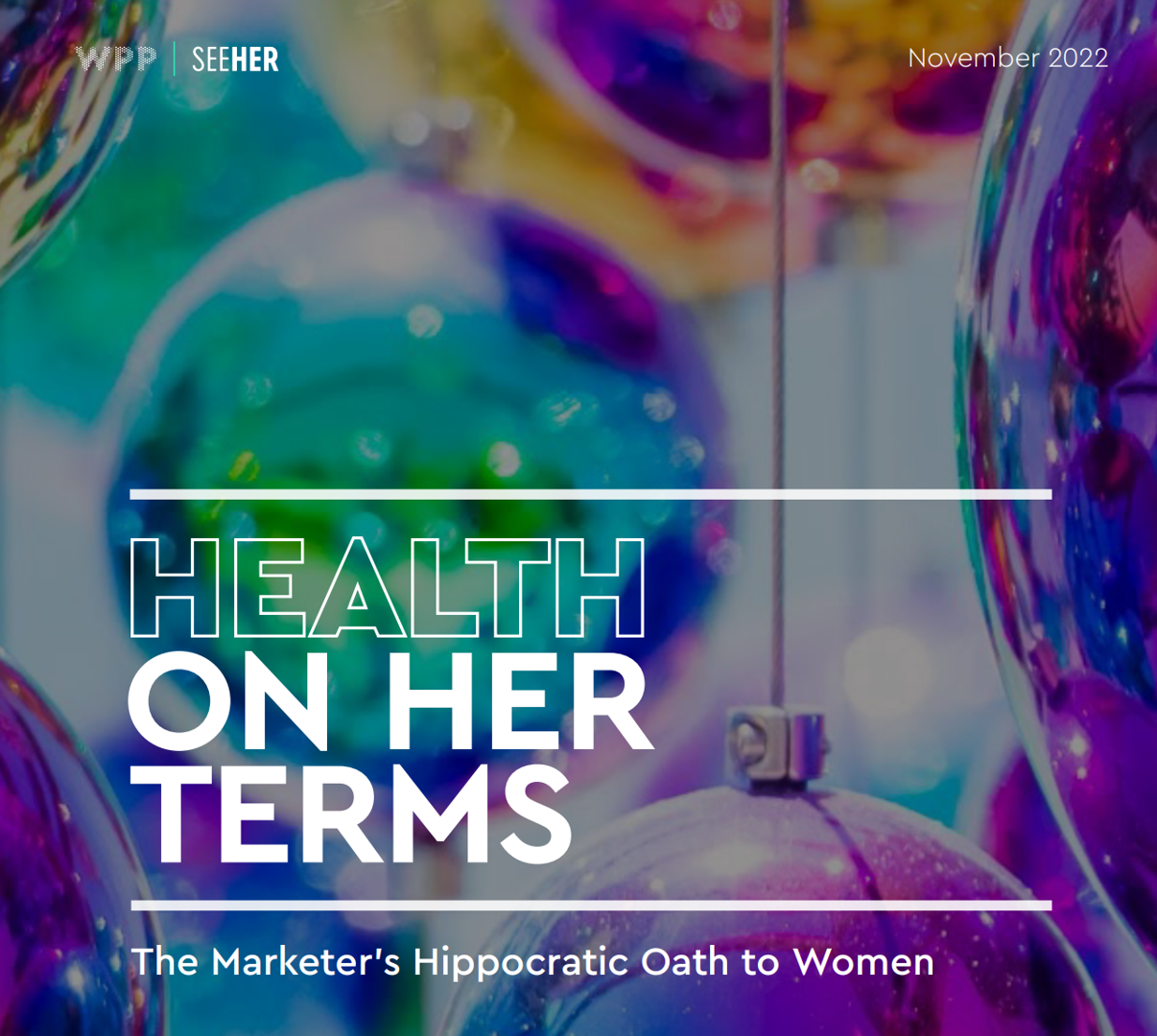


 Interviewed live on BNN Bloomberg (Canada) on the market for GLP-1 drugs for weight loss and their impact on both the health care system and consumer goods and services -- notably, food, nutrition, retail health, gyms, and other sectors.
Interviewed live on BNN Bloomberg (Canada) on the market for GLP-1 drugs for weight loss and their impact on both the health care system and consumer goods and services -- notably, food, nutrition, retail health, gyms, and other sectors. Thank you, Feedspot, for
Thank you, Feedspot, for  As you may know, I have been splitting work- and living-time between the U.S. and the E.U., most recently living in and working from Brussels. In the month of September 2024, I'll be splitting time between London and other parts of the U.K., and Italy where I'll be working with clients on consumer health, self-care and home care focused on food-as-medicine, digital health, business and scenario planning for the future...
As you may know, I have been splitting work- and living-time between the U.S. and the E.U., most recently living in and working from Brussels. In the month of September 2024, I'll be splitting time between London and other parts of the U.K., and Italy where I'll be working with clients on consumer health, self-care and home care focused on food-as-medicine, digital health, business and scenario planning for the future...